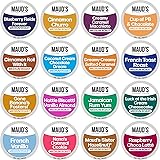Navigating the complex world of coffee beans can seem daunting. This guide, complementing the insightful video above, simplifies your journey. It illuminates the fundamental differences between various coffee beans. Furthermore, it empowers you to select coffees you genuinely enjoy. Understanding your coffee begins with the bean. This article details the profound impact of sourcing, processing, and roasting on your daily brew.
Decoding the Coffee Bean Hierarchy: Price and Flavor Dynamics
The price of coffee varies widely. Factors beyond simple roast level drive these costs. Consider the distinct price bands in the market. Commodity coffee, like Folgers or Maxwell House, represents the lowest tier. Mass market roasters, such as Starbucks or Dunkin’, occupy the middle ground. Specialty roasters, often local or online, command the highest prices. Their offerings reflect superior quality and meticulous care.
A significant variable cost is the green coffee itself. Specialty roasters often pay substantially more. They source higher quality beans. They also purchase smaller volumes. This contrasts with mass market roasters. Such entities buy vast quantities. Bulk purchasing typically lowers the per-pound cost.
Producing one pound of roasted coffee requires 1.3 pounds of green coffee. Moisture loss during roasting accounts for this difference. This “hidden cost” impacts the final retail price. Production costs, including salaries, equipment, and packaging, also contribute. While specialty roasters may have higher margins per bag, their sales volume is considerably lower. Transparency often characterizes the specialty coffee market. High-value beans, like the Gesha mentioned in the video, are expensive. Their limited supply and exceptional flavor potential justify the premium. Roasting costs, however, remain relatively constant across all green coffee types.
Beyond Roast Levels: The Science of Coffee Flavor
Relying solely on “light,” “medium,” or “dark” roast labels is a common mistake. These terms lack standardization. A “light” roast from one company can be darker than a “medium” from another. Furthermore, the green coffee’s origin and variety are paramount. They heavily influence flavor. Two beans roasted to the same visual level will taste different. Their unique chemical compositions dictate this.
The Transformative Roasting Reactions
Roasting converts green coffee into a flavor-rich bean. Heat application triggers a series of complex chemical reactions. These reactions create the coffee’s distinctive taste and aroma.
- **Dehydration:** This initial phase removes moisture. It continues throughout the entire roast.
- **Maillard Reaction:** Around 280-350°F, amino acids and reducing sugars react. This browning reaction creates hundreds of new aroma compounds. It contributes to color, aroma, and taste across many foods.
- **Strecker Degradation:** Often a subset of Maillard, this reaction is crucial for coffee aroma. It also generates nearly all the CO2 trapped in roasted beans.
- **Caramelization:** Sucrose molecules break down into simpler sugars. This starts around 320°F. It generates additional unique aroma compounds.
- **Pyrolysis:** This occurs at very high temperatures. It involves the breakdown of organic material into carbon. A slight degree of pyrolysis can add a generic “roasty” flavor. Over-roasting leads to bitterness and carbonized notes.
Roasters carefully manage temperature and time. They navigate three main phases: drying, Maillard, and development. Adjusting time within these phases significantly alters the flavor. A shorter Maillard phase, for example, can result in lower body and less complex flavors. The roaster’s skill lies in optimizing the roast profile. This unlocks the inherent flavor potential of each unique green coffee bean.
From Cherry to Green Bean: The Art of Coffee Processing
Coffee processing transforms the harvested cherry into a dried green bean. This critical step profoundly influences the final flavor. A coffee cherry consists of multiple layers: outer skin, pulp, mucilage, parchment, silverskin, and the green coffee bean itself. How these layers are removed or retained during drying impacts the bean’s chemical composition. Consequently, it alters the cup’s flavor profile.
Several processing methods exist. Each imparts distinct characteristics:
- **Washed (Wet) Process:** Outer layers are removed. Beans are then washed with water. This process generally produces a cleaner, brighter cup. It allows the inherent bean flavors to shine.
- **Natural (Dry) Process:** Whole cherries dry in the sun. The outer layers are removed only after drying. This method often imparts fruity and “wilder” aromas. It contributes to a full-bodied cup.
- **Honey Process:** The skin and pulp are removed. However, some mucilage (pectin) remains on the bean during drying. This sticky layer lends sweetness. Honey-processed coffees are often complex. They bridge the gap between washed and natural profiles.
Emerging processes further expand flavor possibilities:
- **Anaerobic Process:** This involves fermentation in an oxygen-deprived environment. It results in complex flavors. Notes of fruit, floral, and wine-like characteristics are common. Acidity is often lower, and mouthfeel is smooth.
- **Co-fermentation:** Coffee ferments alongside other ingredients, typically fruit. This innovative method creates unique flavor profiles. It broadens the spectrum of available coffee tastes.
No single process is superior. Each offers a unique flavor journey. Exploring different processing methods helps pinpoint personal preferences. For instance, anaerobic coffees might appeal to those seeking complex, fruity notes. Washed coffees may suit those preferring a crisp, clean cup. Many coffee aficionados keep various types on hand. They match the coffee to the preparation style, hot or iced, to maximize enjoyment.
Cultivating Quality: Harvesting and Origin
Harvesting methods also significantly influence coffee quality and price. Three primary methods are employed: hand-picking, strip picking, and machine harvesting. Hand-picking is the most labor-intensive. It yields the highest quality. This method ensures only perfectly ripe cherries are selected. Coffee cherries ripen unevenly. Mechanical harvesting collects both ripe and unripe cherries. This mixture compromises flavor potential. Therefore, hand-picking remains crucial for high-quality coffee production. Labor costs vary globally. This affects the final price of hand-picked coffee.
Ripe coffee cherries contain higher sugar content. They also possess more developed aromatic compounds. These qualities are essential for a flavorful brew. Experts often consider harvest the peak of coffee quality. Subsequent stages focus on preserving, not improving, this quality.
Single Origin Versus Blends
Understanding single origin and coffee blends is vital for buyers. Single origin coffees come from a specific location. This could be a single estate, a group of estates, or a cooperative. They offer a distinct flavor profile. This profile reflects the unique “terroir” of their origin. Terroir encompasses climate, soil, and altitude. Specialty roasters often highlight single origins. They aim to showcase the coffee’s unique characteristics.
Coffee blends combine two or more coffees. Blending can occur after roasting. Roasters combine single origins to create balanced flavor profiles. Blending also happens before roasting. Mass-market roasters often use this approach. They blend green coffees from various sources. This ensures a consistent product for large-scale demand. However, pre-roast blending can homogenize flavors. The resulting complexity may be reduced. For those new to specialty coffee, single origins offer a clearer path. They allow direct appreciation of specific flavor attributes. This simplifies the exploration process.
Empowering Your Palate: Practical Steps for Coffee Exploration
Finding coffee beans you love is an achievable goal. Focus on practical experimentation. Brewing technique is important. However, the quality of your beans is paramount. Start by selecting exceptional beans.
The Power of Side-by-Side Tasting
Conducting side-by-side tastings, or “cuppings,” is highly effective. You do not need expert vocabulary. Your palate instinctively identifies preferences. Visit a local specialty roaster. Request two vastly different coffees. This approach accelerates your learning. Experiencing contrasting flavors helps define your taste. Many coffee shops offer flights or tastings. This allows sampling multiple coffees conveniently.
Connecting Preferences to Bean Characteristics
Once you discover a preferred coffee, understand its attributes. Note its origin, variety, processing method, and listed flavor notes. This information forms a foundation for future exploration. For instance, if you favor an anaerobic-processed coffee from Ethiopia, seek similar options. Understanding these variables empowers informed purchasing decisions. It helps you explore the vast world of coffee with confidence. Your journey through coffee’s nuances is a continuous discovery.







